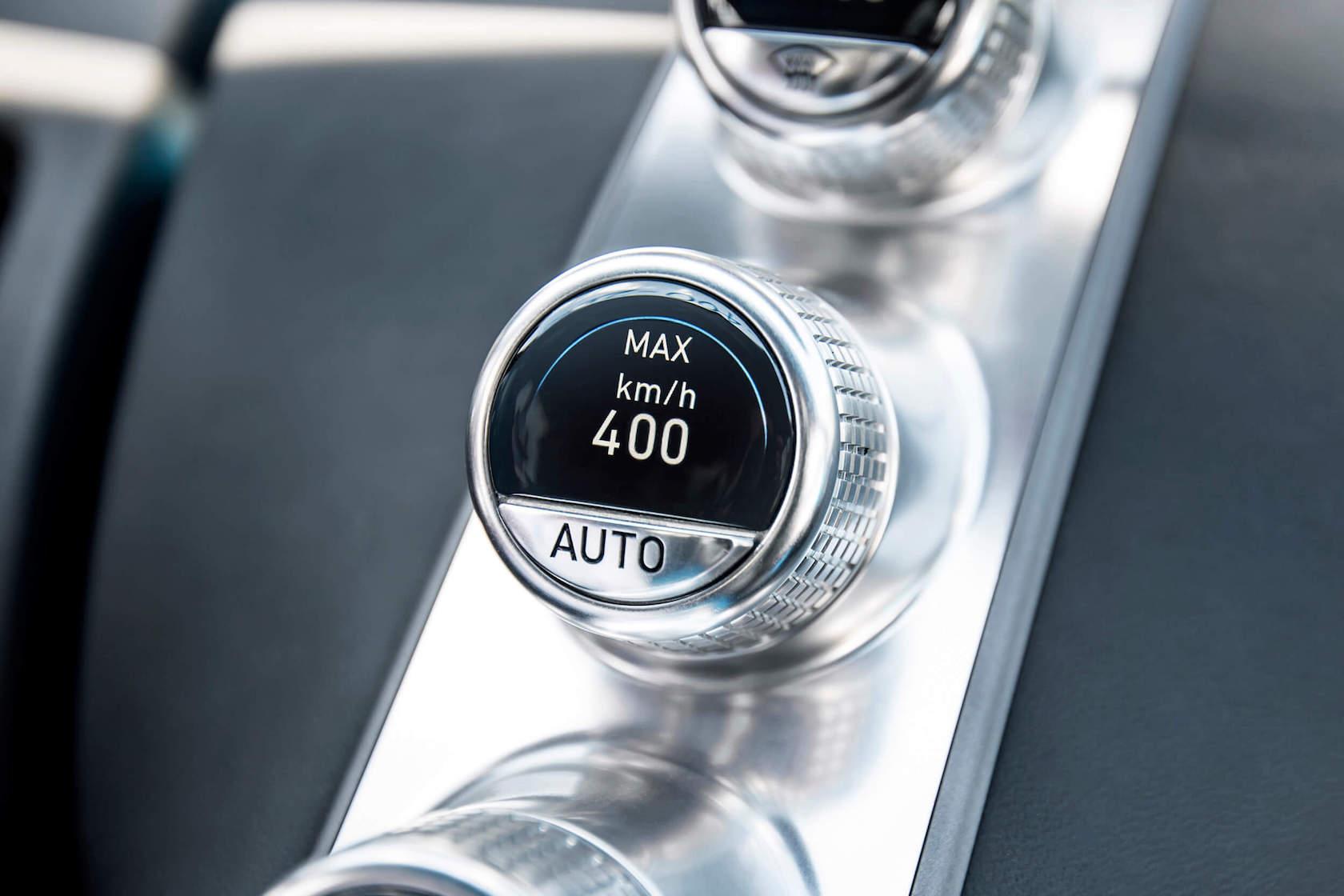Driving the $3m Bugatti Chiron was nothing like I expected
The Bugatti Chiron is the holy grail of hyper-fast production cars. At the vanguard of engineering and design, it's a big car with big numbers. It also comes with an astronomical price tag: $2.98M before you start piling on any options. Now, $3 million is a lot of money – even for folks with the financial means to even consider a Bugatti in the first place – but the price is an indication of the performance, top speed, and general refinement of the Chiron. It is a ridiculous car that transcends boundaries.
I suspect I'm more passionate about cars than most, but they don't need to be performance exotica for that to be the case. You can throw me inside a Honda Civic and I'm confident I'll still find ways to have fun, along with good things to say without mincing words. In short, I'm easier than most to impress. However, I've seen grown adults with a fleet of private jets drool over the mere sight of the Bugatti Chiron, so it's not just me who is wowed. And we haven't touched on the numbers yet.

Incredible car, ridiculous numbers
At a time when many automakers are turning to smaller capacity engines and making more use of turbocharging and supercharging, or indeed looking to hybridization to hit maximum velocity, Bugatti has stuck to what makes sense. In the case of the Chiron, that means a massive 8.0-liter 16-cylinder engine. Think two V8 motors – already large in their own right – bolted together to form a W, and you're not too far off. This herculean motor is fed by four massive turbochargers, two of which are constantly pumping massive amounts of air at any given engine speed. The other pair of turbochargers are equipped with electronically controlled valves, turning on or off depending on the rev range and throttle position. The result is a linear torque curve and the elimination of just about any sign of turbo lag.
The result of all this madness is 1,500 horsepower and 1,180 lb-ft of torque. Maximum power arrives at just 2,000 rpm, and keeps on going all the way to 6,000 rpm. They're numbers that I frankly found tough to conceptualize without context, so here's how the Chiron lines up. The Veyron, Bugatti's previous flagship, "only" had around 1,000 horsepower to play with. The 6.7-liter Cummins diesel in a Ram truck, meanwhile, can churn out 800 lb-ft of torque. Now the Ram isn't small, nor light, and neither is the Chiron. At approximately 4,400 lbs, and around 4,544 mm long, it bulges with potential.

That potential is its record breaking top speed. The Chiron can reach a maximum speed of 261 mph. That's top end isn't down to the bravery, skill, or cojones-size of the driver, but the limitations of the Bugatti's shoes. There's currently no tire in the world that's strong enough to keep up with anything faster.
"The new Bugatti Chiron needs to accelerate faster and reach a higher top speed than the Veyron, so we figured we needed at minimum of 1,500 horsepower to make that happen," Willi Netuschil, head of the engineering department at Bugatti, explained to me. "We developed a two-stage turbocharging system to give the Chiron a straight power curve which can easily be controlled by the driver."
Tire issues aside, the Chiron can go from 0 to 60 mph in a blistering 2.5 seconds. Keep your right foot buried, and you can watch the Chiron laugh all the way from 0 to 124 mph in just 6.5 seconds total. Find an empty, straight road that's long enough, meanwhile, and you can push the Chiron to 250 mph in 32 seconds or less.
There's a degree of forward planning required when you're driving a car as powerful as this, which most other vehicles simply don't demand. After all, when you're wielding 1,500 hp, a mere dot of a car in the distance becomes traffic you need to deal with in very short order. Now add to that the fact that I had the legendary Butch Leitzinger, professional racing driver, as my co-pilot, watching with what I could only assume were eagle-eyes as I tried to temper my need for speed in the first 30 minutes or so of our drive.
"Vince, if you'd like to test out the torque band, feel free to along this stretch of the road."
It's an offer that means a lot when that torque band consists of more pound-feet than two Porsche 911 GT2's, and it turned out to require even more patience before I could take Leitzinger up on his offer. Waiting at the side of the road, allowing more humdrum traffic to trickle past, I resisted the urge to gnaw on my fingernails or bemoan their sluggishness. Finally, though, the road was clear as far as the eye could see, and it was time to introduce myself properly to the gas pedal.
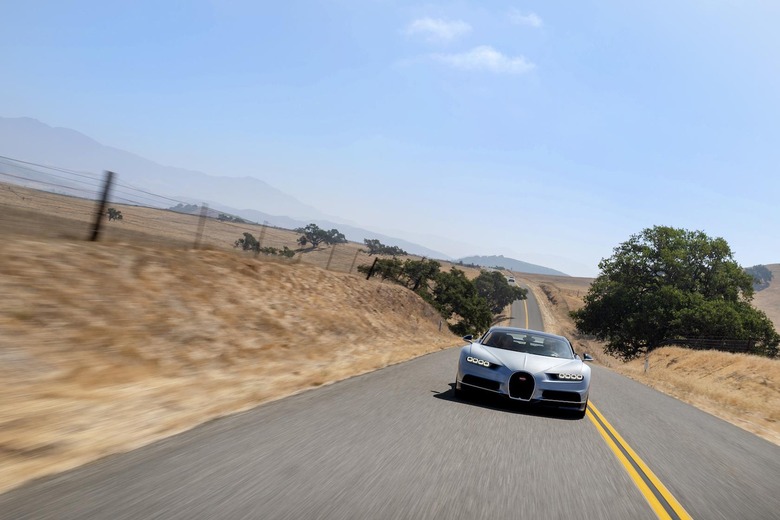
In the next 10-12 seconds, I got to live out a childhood dream. The best comparison I can offer is the hyperdrive scene from Star Wars: the periphery blurring as you hurtle forward like a round from a cannon. Surprisingly, though, despite all that torque and horsepower, the Chiron was unexpectedly easy to drive. I won't tell you the final speed on the dashboard – I suspect you can do the math based on the numbers above – but once you've committed there's no turning back. Almost as though your brain has been bypassed, and it's just the engineering of the car and the signals from its four wheels and the road, communicating directly with your autonomic nervous system.
Situations that, at everyday speeds, are mundane and unremarkable take on a whole new level when you're traveling at Chiron pace. Approaching a semi truck in the right lane, at some of the fastest autobahn speeds I've ever achieved, for instance, sends an instant "Danger! Danger!" message rocketing through your neurons. The slightest twitch at the wheel or road imperfection can be a lot more serious compared to 65 mph on the freeway.

Within a fraction of a second, though, we blew past the semi. There's something vaguely out-of-body about it: time being so fast, and yet oddly like slow motion, too. In that split second it was as though I could both see out of the windshield, see the blur of the truck out of the corner of my eye, and yet perceive the whole maneuver as though from a bird's eye position way overhead.
If there was a takeaway – and an unexpected one – from my experience in the Chiron, it's that the Bugatti really isn't as difficult to drive as you might think it would be. Indeed, I suspect in any other hypercar that overtaking experience would've been supremely stressful. It took me less than an hour into my drive to boil down the question of "why the Chiron rather than. LaFerrari, or a Pagani, or any other exotic?" It comes down to one word: comfort.
No, I don't mean the hand-finished seats, or the lack of road or wind noise. Those things are expected from a hypercar of this caliber. What I'm talking about is how easy it is to drive the Chiron. This car isn't going to kill you if you stab at the gas pedal.
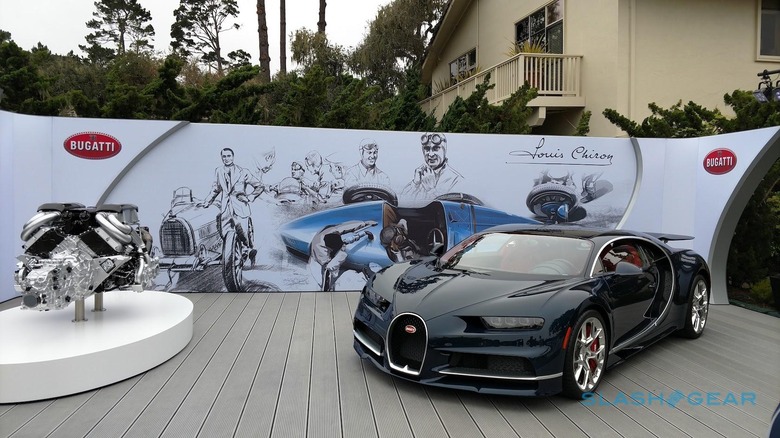
Part of that is how precisely engineered – over-engineered, in fact – the car is. Lower and wider than the Veyron, at 1212mm and 2038mm respectively, it sits hunkered down to withstand the gale-force winds encountered at triple-digit speeds. Speed in one direction is countered with a stupendous braking system: massive 420mm carbon ceramic discs to haul back all that weight. In fact, the Chiron can go from 249 mph to a dead stop in a little over 9.4 seconds. The front brake discs are 16.5-inches in diameter, the same size as the wheels on a base model compact car. Oh, and the rear wing can act as an air brake, similar to the wing flaps of a fighter jet. All, I found, almost eerily free of drama.
"We had to rework the braking system in the Chiron since it is engineered to be much faster than the Veyron," Netuschil explained. "This new system comprises of new calipers equipped with titanium pistons with a new cooling design. We also came up with a heat shield and air curtains that covers the brake discs and prevent the heat from being absorbed by the rims. Hot wheels will cause tire issues, and we don't want that."
That understatement hides a whole lot of aerodynamic work. The front brakes are cooled directly by colder air fed via the ducts located on the inner side of the front headlights. They're hard to notice at first, but they're part of the great lengths Bugatti has gone to so as to ensure aerodynamics and brake cooling are at their peak, without slapping some awkward-looking body panels on the car.

The 8.0-liter engine delivers its power to all four wheels, via a seven-speed dual clutch transmission. Most of it goes directly to the rear, though a Haldex coupling can funnel torque to the front wheels should the situation demand it. The Chiron gets bigger wheels than the Veyron, too: 20-inches on the front, and 21-inches at the back. They're clad in wider rubber, too, at 285mm up front and 355mm at the back. The Veyron Super Sport may have broader rear tires, but that's a decision that comes down to the balance of top speed versus lap times and precision handling. If you really care about cornering, you'll need to persuade one of the forty buyers of the $6m Divo to give up their car, which Bugatti specifically designed to max out performance in the turns.
The Devil is in the Details
Yes, the 2018 Bugatti Chiron is equipped to outrun any other hypercar on the road. It can also stop from a higher top speed if you choose to do so. Ultimately, though, the Chiron isn't just about speed. You might find this hard to believe but, despite the athletic DNA, the Chiron is actually a luxury car at its very core.
The carbon fiber monocoque tub and aluminum short frames makes the Chiron the stiffest supercar on the planet. And, unlike the Veyron, the rear sub-frame and engine carrier are also created from carbon fiber, contributing to the same rigidity as you'd find in a proper LMP1 race car. So stiff, in fact, that it wouldn't look too crazy to drive the Chiron wearing a helmet and some racing gear.

Climb inside the interior, though, and you're about as far from a stripped-back race car as you could imagine. The first thing you notice is the absence of a large touchscreen in the center console. Bugatti instead installed a set of center dials that can change their function depending on what you want to see. The top center dial controls the air vents, the next controls fan speed, and then the one beneath it controls the temperature of the climate control system. The last – and biggest – center dial is used to control the heated seats.
There's a party trick to the bottom center dial, though. Press and hold it for a couple of seconds, and all the center dials flick to display a different setting. Now, the top-most dial reads your horsepower, and below it your current speed. Next is the engine rpm, and the final dial will show you which among the seven gears is engaged at the moment.
Bugatti made it clear that they wanted to give the Chiron a timeless appeal. In this regard, they have succeeded. The interior is not only plush and luxurious, but it feels as solid as a bank vault. The only screens you'll see are in the instrument cluster. Where's the radio? That little On/Off switch beneath the shifter is what you're looking for, while the channel and volume controls are on the steering wheel. Best to leave it all off, though, and enjoy instead the soundtrack of the outrageous W16.

It's so simple and intuitive, that it's unexpectedly easy to mistake the Chiron for an ordinary car when you're behind the wheel. Of course it's not, a fact you run into when trying to access its greater excesses. If you want the top speed, you'll need to look down to your left for the special speed key. Only after unlocking that will the Bugatti's full potential be available to you.

I already said that looking ahead, to the far distance, is sensible at that point. Risk a glance behind you, though, and you there's no mistaking the split rear window, or indeed how the rear glass is divided by the sweeping C-line contours that arc across the sides of the Chiron. That framing of the A-pillar and doors with an unbroken strip of shiny aluminum continues through into the interior, and is then echoed by the longest light bar around. Swooping behind the driver and passenger, it's a reminder that a car in this realm won't just make do with ordinary LED accent lights.
A far from ordinary driving experience
Not every journey can be carried out at hyperspeed. Some trips, like creeping through LA's uncompromising morning traffic, are a stark reminder that it doesn't really matter how expensive your ride is: congestion will treat you all the same. Where some supercars become awkward if not downright uncomfortable in those situations, in the Chiron it's easy to forget you're driving an ultra-exclusive hyper car as you creep forward in bumper-to-bumper jams.
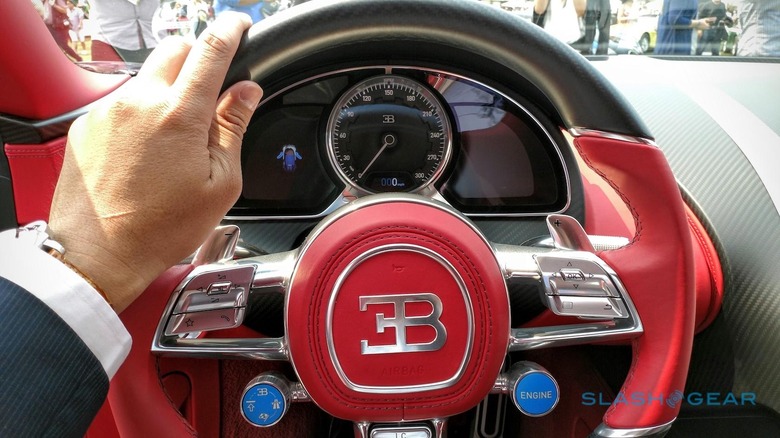
With EB mode engaged, the Chiron can waft over minor road undulations without troubling the chassis. Turn to Autobahn, and the car's suspension stiffens, while ride height is reduced. Handling mode is designed for the track, lest you're willing to get tail-happy in a potentially expensive way. The steering stiffens up to overly firm levels, too, but the car is never anything less than stable and direct with it.
To be honest, though, it didn't really seem to matter what mode I was in, most of the time. The Bugatti Chiron feels as fast as advertised, or maybe faster than what your mind can comprehend. No, it may not be as light or agile as other super-fast cars, but it will simply overwhelm your senses.
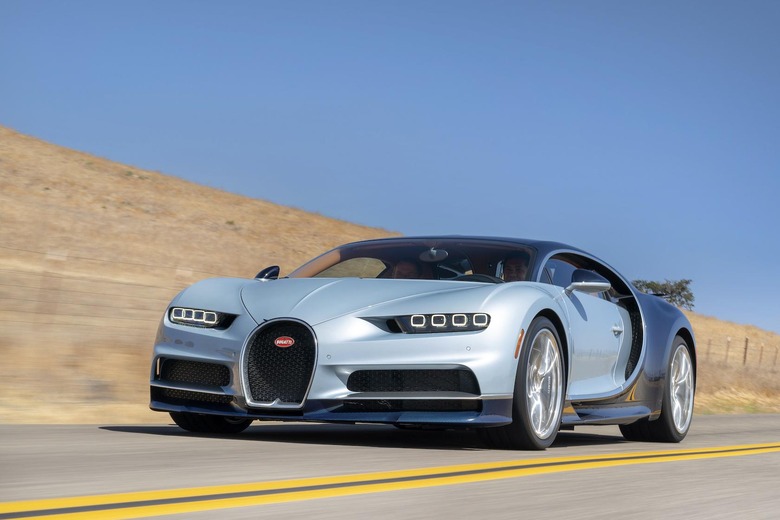
The Chiron feels special, because it is special – in a transcendent way, because it's not a one trick pony. What else would you call a car that can run a 26 gallon fuel tank dry in under seven minutes when driven flat out, or one that is equipped with a front emblem made from pure silver? That has the engine, drivetrain, and pure speed to shame anything this side of a jet fighter, but with an interior so finely crafted you could be traveling at 10 mph and still be wowed.
No, only Bugatti has the audacity to merge such ludicrous power with relentless refinement. If you're so lucky as to have the money, you should go out and buy one and, more than that, you should drive it. Bugatti plans to make just 500 of the Chiron, and though the cost of entry is high, the price you pay for missing out is far worse.
Updated to reflect the top speed of the Chiron and the size of its gas tank





